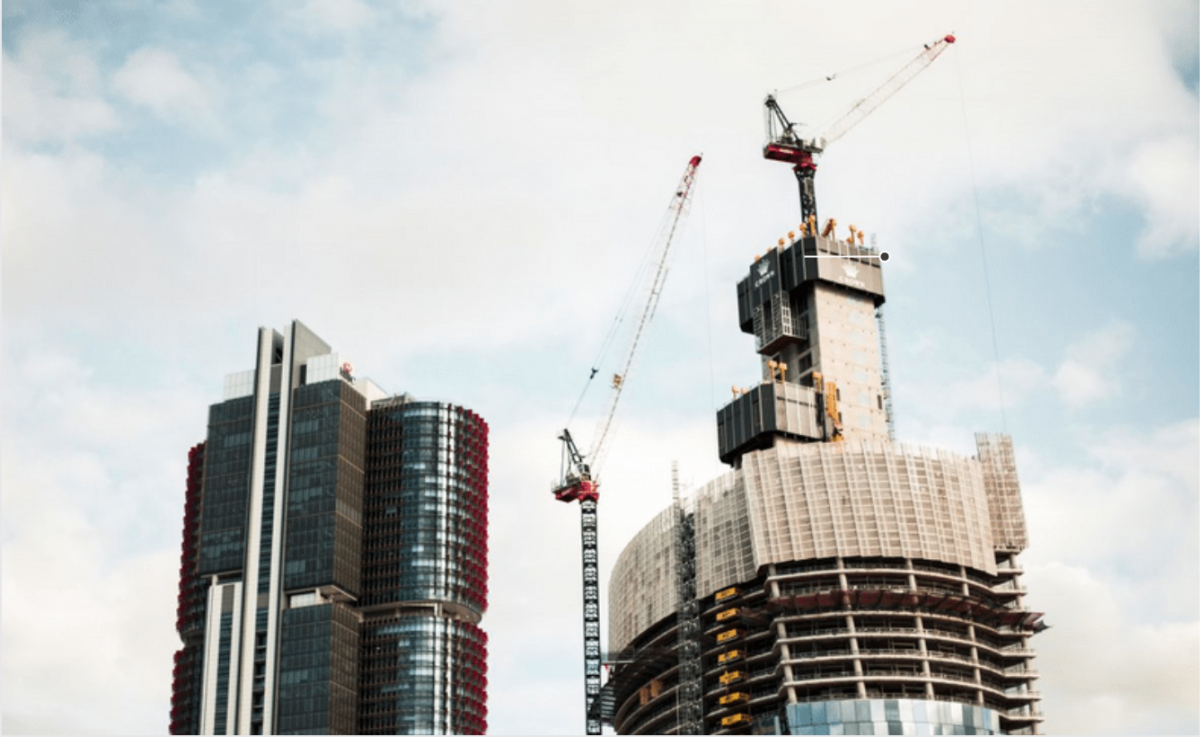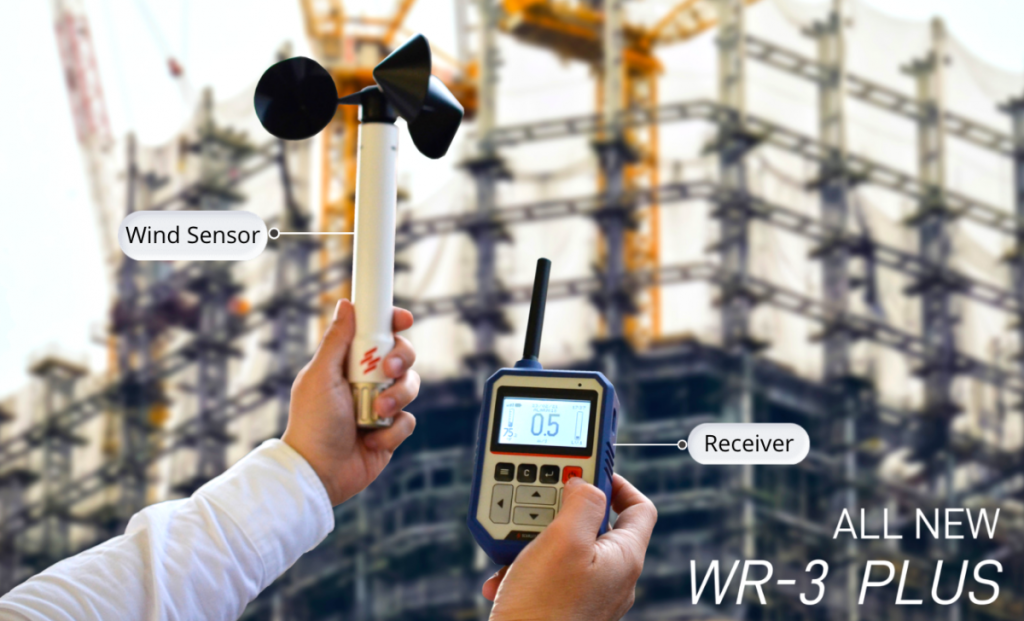According to the American National Standards Institute (ANSI) between 2000 and 2010, there were 1,125 tower crane accidents reported worldwide, resulting in more than 780 deaths. One of the primary contributing causes is wind.
Effects of High Wind
The primary concern related to high winds on crane safety lies on the wind pressure impact on the tower crane’s load. To know wind pressure, first we need to know the wind speed. Wind speed can be measured through tools such as wireless anemometers. Wind pressure is calculated as the square of the wind speed. As wind speed doubles, the wind pressure increases by a factor of four times. For instance, if wind speed increases by 2, the pressure exerted increases by 4. So, if a tower crane is working under a 14 mph wind and there is a sudden gust of 28 mph, it must withstand a sudden load that is four times as high.
This is why it is important to know wind speed conditions when operating a tower crane as the smallest increase in wind speed can severely affect crane safety. The most common practice to measure wind speed is to install wireless anemometer (wind speed sensor) on the highest part of the crane, normally on the jib for tower crane. Traditional crane safety approaches are often based on weather forecasts, but forecasts only provide a general overview of expected wind conditions and do not reflect specific-site conditions, also it can not predict wind gusts. This is not reliable for planning crane operations, as solely depending on weather forecasts may result in less than optimal efficiency, higher costs, and longer deadlines, only a weather monitoring tool installed on-site can detect dangerous winds. Therefore, the best practice is to monitor wind conditions and take into account wind speed when operating tower cranes.
Safety Standards and Regulations
OSHA defined “high-wind” as winds exceeding 64.4 kilometers per hour (40 miles per hour), or 48.3 kilometers per hour (30 miles per hour). OSHA , HSE, and other safety guidelines such as ACOP require on-site wind monitoring tools such as anemometers to be fitted on cranes. Anemometer provides real-time and reliable data that help to prevent hazardous effects of the wind. Thus, play an important role in increasing project site safety.
WR-3 Plus wireless anemometer offers a practical solution for wind monitoring tools on tower cranes. Its wind sensor not only able to measure live, average, and maximum wind speed but also:
- Beaufort Bar Graph
- Wind Chill
- Ambient Temperature
- Atmospheric Pressure
QUICK LIFTING GUIDE CHECKLIST
In order of importance, from the most important to important one, beside knowing wind conditions, there are other 3 basic safety precautions that should be considered for tower crane lifting guide:
- The Load
There are some factors affecting the load, such as wind resistance, the shape and size of a load , wind speed and direction. Make sure that lifting is done within a safe working load of the crane.
- Manufacturers Limit
Every make and model of crane has its own limits set by the manufacturer based on the crane and its configuration. These limits should never be exceeded. Typical maximum wind speeds for tower cranes is 20 m/s (45 mph / 72 kph).
- Crane Operator
The crane operator is the most experienced person on the crane. Crane operators must know the in and out of the crane that is being operated, from the crane configuration, lifting and handling materials, to wind conditions.

